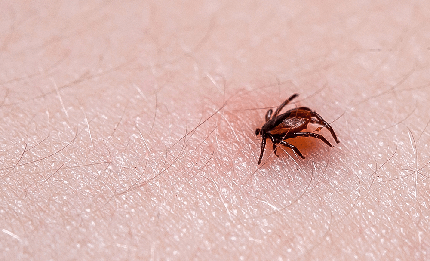Chronic lyme disease occurs when a person treated with antibiotic therapy for the disease continues to have symptoms. The disease is also called post-Lyme disease syndrome or post-Lyme disease treatment syndrome. It is not known why some individuals develop this disease after treatment. Specific symptoms and medical history as well as the most recent research should be considered to guide treatment.
The causes of chronic lyme disease

Lyme disease is a bacterial infection caused by the bacterium Borrelia burgdorferi. You can get lyme disease if you are bitten by a tick that carries the bacteria. Generally, blacklegged ticks and deer ticks spread this disease. These ticks collect bacteria when they bite sick mice or birds.
Lyme disease is also called borreliosis or if the symptoms are neurological, the Bannwarth syndrome.
Most people with lyme disease are successfully treated with antibiotics. People with Lyme disease usually have a quick and complete recovery.
Why don't some people recover completely after treatment? Some experts believe that the symptoms are caused by persistent bacteria that have not been destroyed by antibiotics.
Others believe that the disease damages your immune system and tissues. Your damaged immune system continues to respond to the infection even after the bacteria are destroyed. This causes symptoms.
Risk factors for post-treatment lyme disease
If you are infected by the bite of a diseased tick, the risk of getting Lyme disease syndrome after treatment is higher. If the infection progresses to the chronic stage, your symptoms may last for weeks, months or even years.
You may also have a higher risk of these symptoms in the long term if you are not treated with the recommended antibiotics. However, even people who are receiving antibiotic treatment are at risk. The cause of post-treatment Lyme disease syndrome is unknown. There is no way to determine if it will progress to the chronic stage.
Symptoms of post-treatment Lyme disease
In general, the symptoms of post-treatment Lyme disease are similar to those of the earlier stages. People with persistent symptoms often have persistent episodes of:
- Fatigue
- Restless sleep
- Joint or muscle pain
- Pain or swelling in knees, shoulders, elbows and other large joints
- Decreased short-term memory or ability to concentrate
- Speech problems
Possible complications
Living with persistent Lyme disease symptoms after treatment can affect your mobility and cognitive abilities. It can also lead to extreme lifestyle changes and emotional stress.
Some people with long-term debilitating symptoms may be willing to try unproven alternative therapies. Talk to your doctor before starting any new medication or treatment. While they may claim to offer a cure, these potentially toxic remedies can lead to other health problems.
Diagnosis of chronic lyme disease
Your doctor will diagnose Lyme disease using a blood test that will check your level of antibodies to the bacteria that causes the disease. While this test can confirm infection, it cannot determine the cause of your persistent symptoms.
Depending on your symptoms, your doctor may recommend testing certain affected areas to determine the level of damage or the parts of the body affected. These tests may include:
- An electrocardiogram (ECG) or echocardiogram to examine heart function
- A spinal tap to examine the cerebrospinal fluid (CSF)
- MRI of the brain to observe neurological disorders
Treatment of Lyme syndrome after treatment
When diagnosed at an early stage, the standard treatment for Lyme disease is an oral antibiotic treatment of two to three weeks. Doxycycline, amoxicillin and cefuroxime axetil are the most commonly prescribed drugs. Depending on your condition and symptoms, additional antibiotics or intravenous therapy may be required.
The exact cause of post-treatment Lyme disease syndrome is not known. Therefore, there is a debate as to the appropriate treatment. Some experts recommend continuing antibiotic treatment. However, there is evidence that long-term antibiotic therapy will not improve your chances of recovery. Prolonged use of these medications can also lead to complications.
The treatment of Lyme disease post treatment often focuses on reducing pain and discomfort. Prescription and over-the-counter pain relievers can be used to treat joint pain. Nonsteroidal anti-inflammatory drugs (NSAIDs) and intra-articular steroids can be used to treat problems such as joint swelling.
Living with Lyme disease after treatment
Most people with post-treatment Lyme syndrome recover from persistent symptoms over time. However, it can take months or even years before you feel completely well. A small number of people continue to experience symptoms, including fatigue and body aches, despite treatment. It is difficult to understand why some people do not fully recover.
SourcesChronic Symptoms. (North Dakota).
columbia-lyme.org/chronic-symptoms
Poisson D. (1995). Environmental risk and prevention of Lyme disease.
ncbi.nlm.nih.gov/pubmed/7726188



